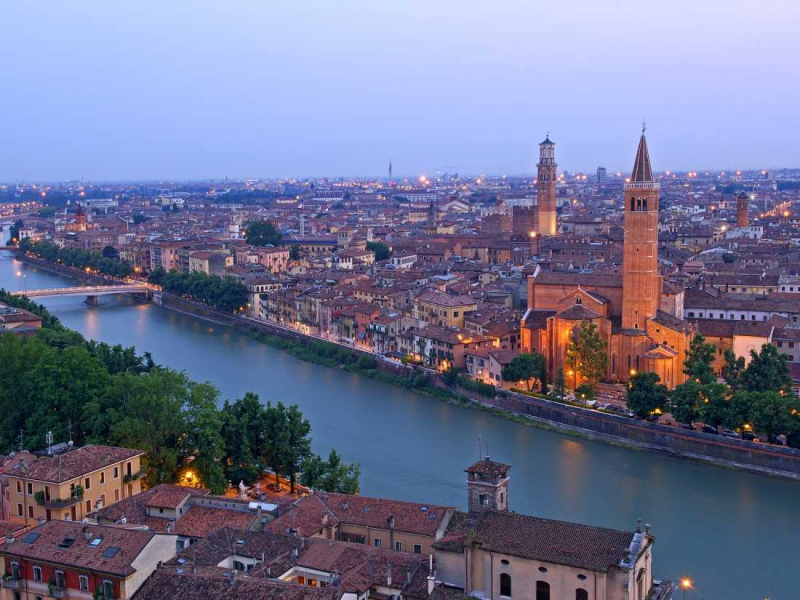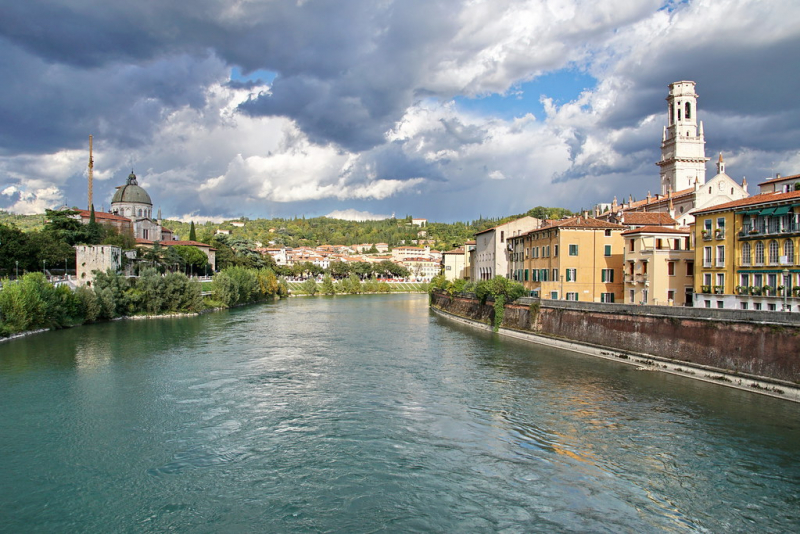Adige

The Adige River, also known as the Italian Fiume Adige, the Latin Athesis, and the German Etsch, is Italy's second-longest watercourse after the Po River. The Adige runs fast through the Venosta Valley south and east via Merano and Bolzano, rising in the north from two Alpine alpine lakes below Resia Pass. After receiving the waters of the Isarco River in Bolzano, the Adige flows south through the Trentino-Alto Adige area, known as the Lagarina Valley, in its middle course. It enters the Po plain at Verona, then turns southeast and, after numerous long meanders, enters the Adriatic Sea just south of Chioggia and north of the Po River delta after a 255-mile journey (410 km). It drains a 4,710-square-mile basin (12,200 square km).
The river's flow was probably several miles farther north in early Christian times until, in AD 589, the river burst through its banks and created its current route. The dikes built over the ages have had to be raised multiple times, and the last 50 miles (80 km) or so of the river's path is totally man-made. In its higher Alpine part, the Adige provides hydroelectric power and irrigation for the Veneto. Floods, such as those that occurred in 1951 and 1966, cause significant damage and need continual riverbank maintenance.
Length: 255 miles








